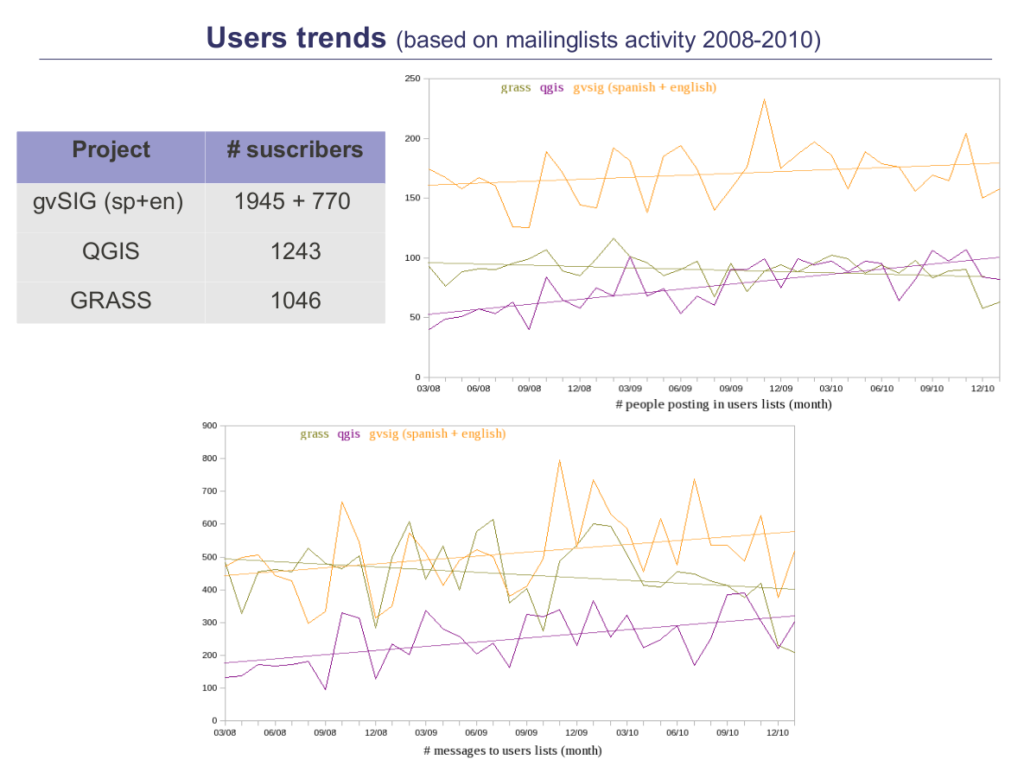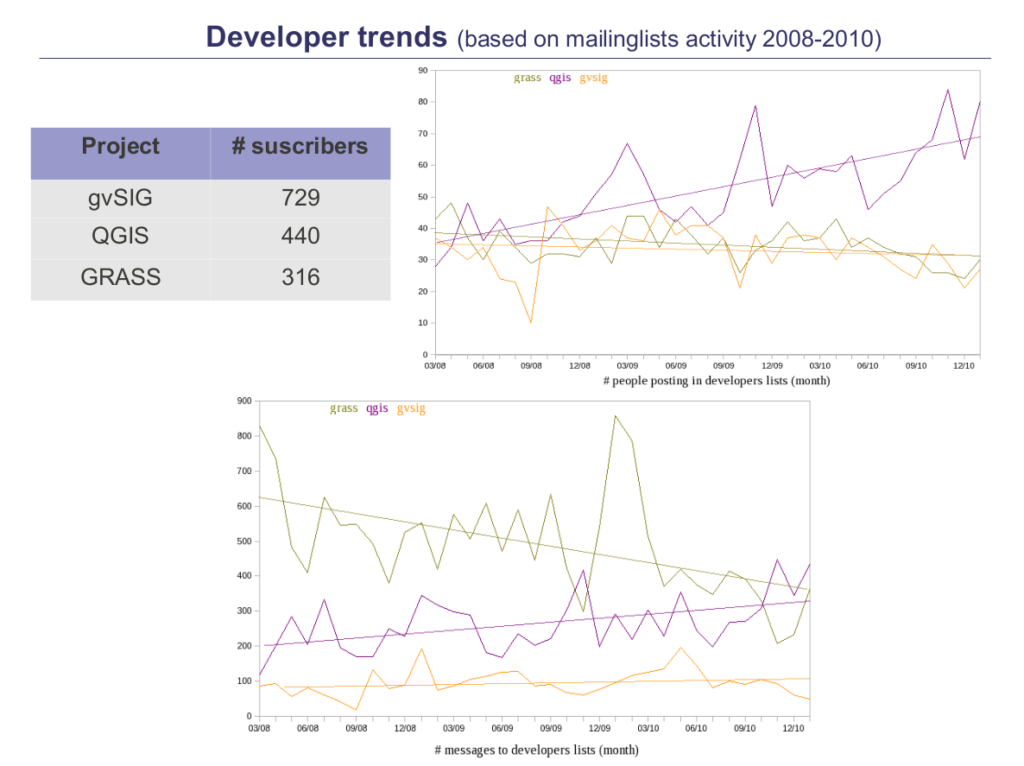This post is part of a series: introduction (I), adoption (II), activity (III), work hours (IV), generations (V), and coda (VI).
Find below the statistics for mailing list activity in GRASS, gvSIG and QGIS during the period 2008-2010. The first one shows data from the general user mailing lists for each project. Take into account that data for gvSIG aggregated both international and Spanish mailing list due to the reasons stated here.


The next one shows the same data (number of people writing and number of messages by month) for the developers mailing lists.
Data patterns
Well, certainly not the user base. The data shyly introduce us the trends, not the real user base. The model we adopted to study the projects reflects just a part of the community -which is arguably the engine of the project- but don’t take the data as the number of users for each project. For sure, each one of our favorite projects has more users than those participating in (these) mailing lists!
Anyway, here some food for thought:
- GRASS: it smoothly decreases in terms of number of messages as well as people writing, which happen within users and developers. The tendency is not clear, though.
- gvSIG: the data shows a steady increasing number of users participating in the mailing lists. On the other hand, although it is the project with more people subscribed to developer mailing list, it shows the less activity of the three projects (in terms of # of messages in developer lists): few technical conversations seemed to happen through the mailing lists during that period.
- QGIS: according to the data, a clear growth exists in the community. In the period of study (3 years) the number of users and developers participating in mailing lists has been doubled!
Few more can be said, hope the graphics help enough to understand! Looking forward to your feedback.
Leave a Reply